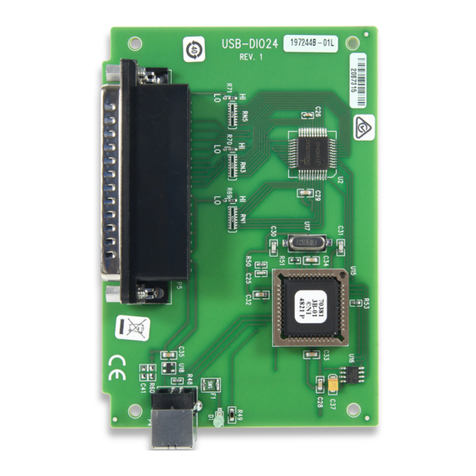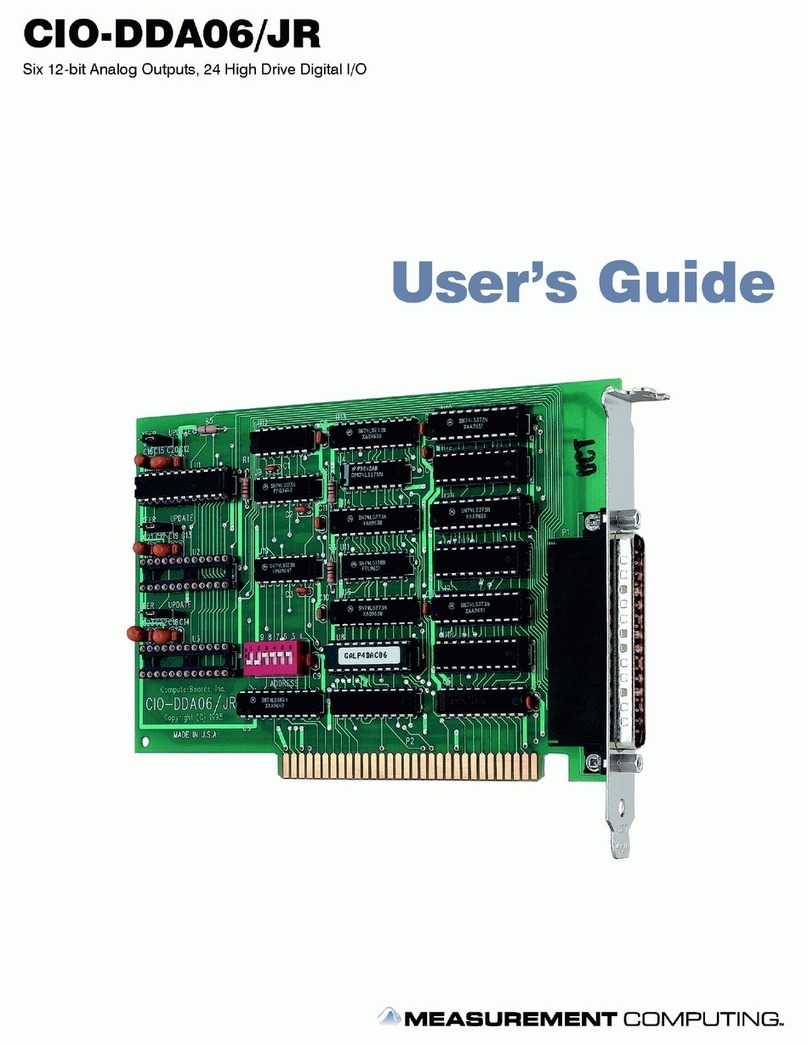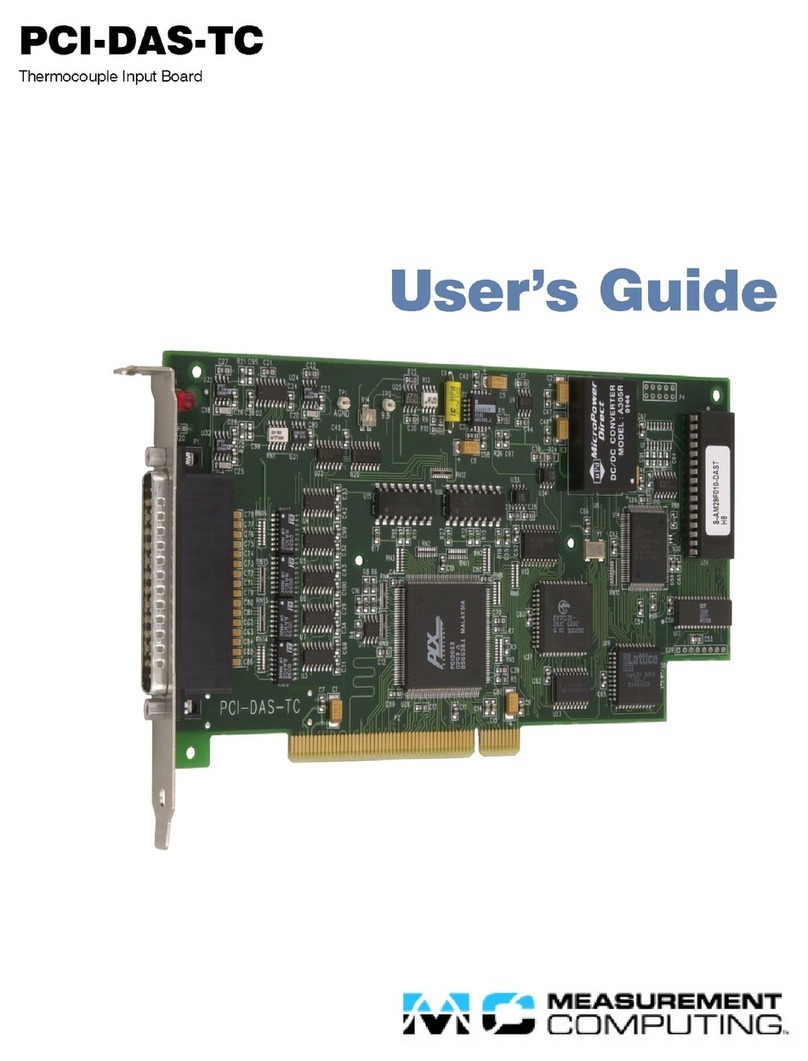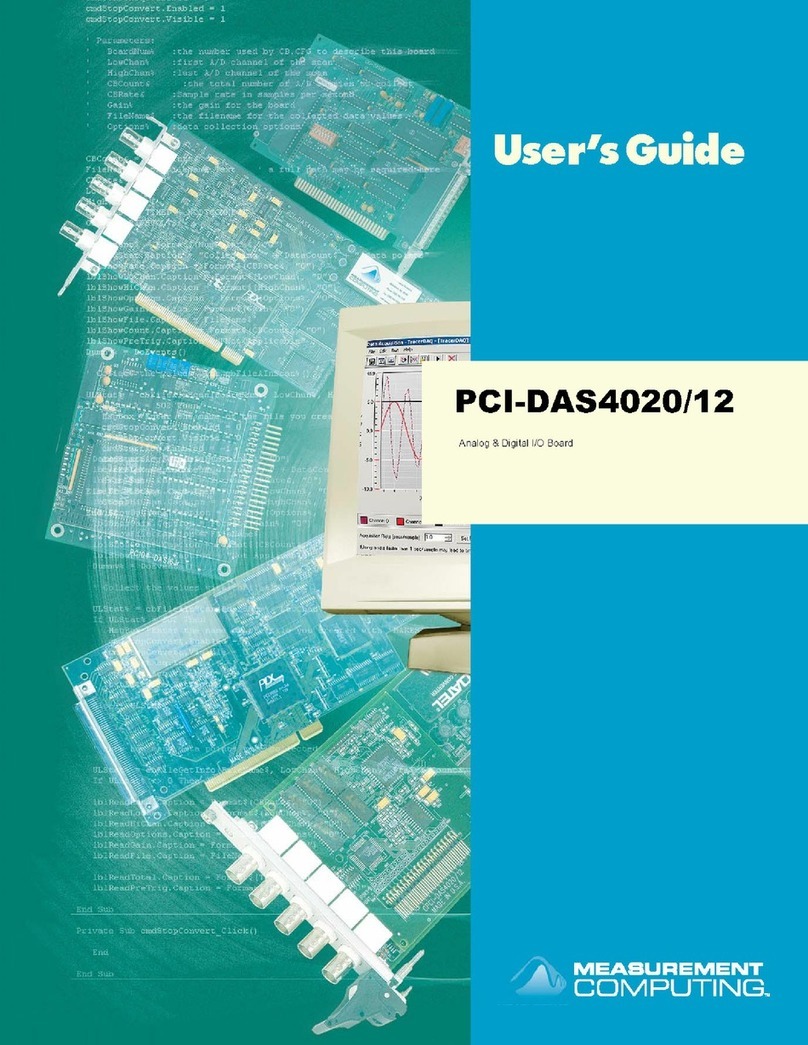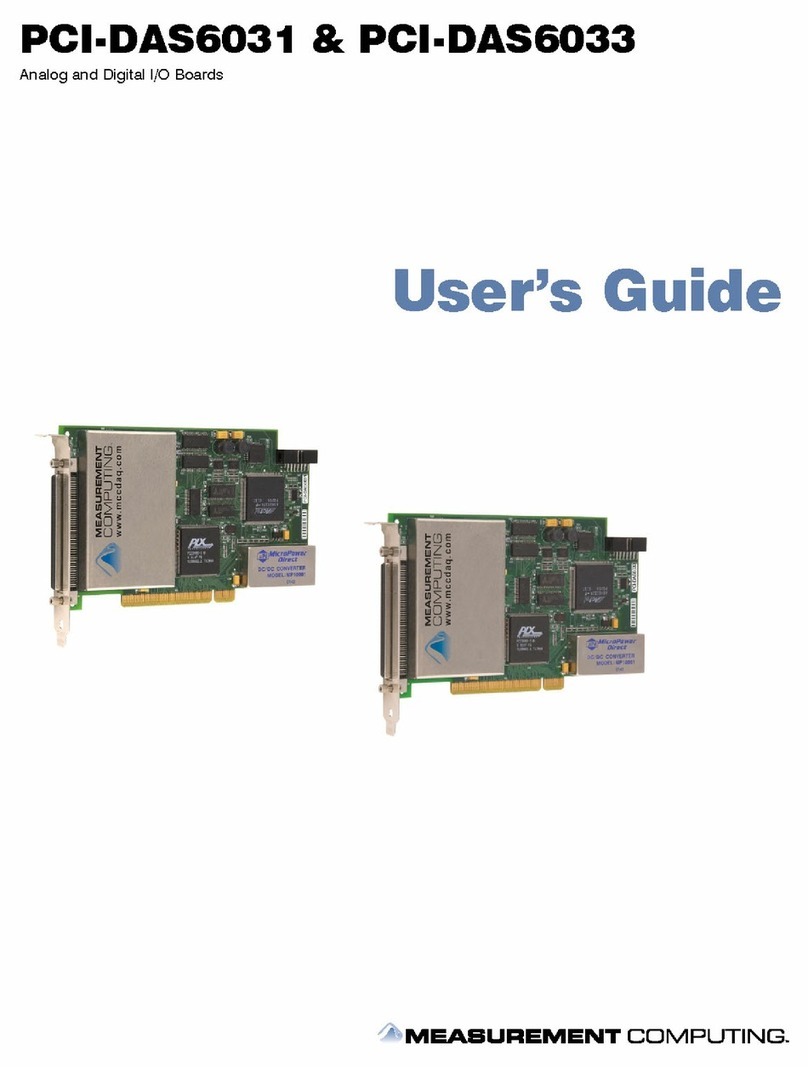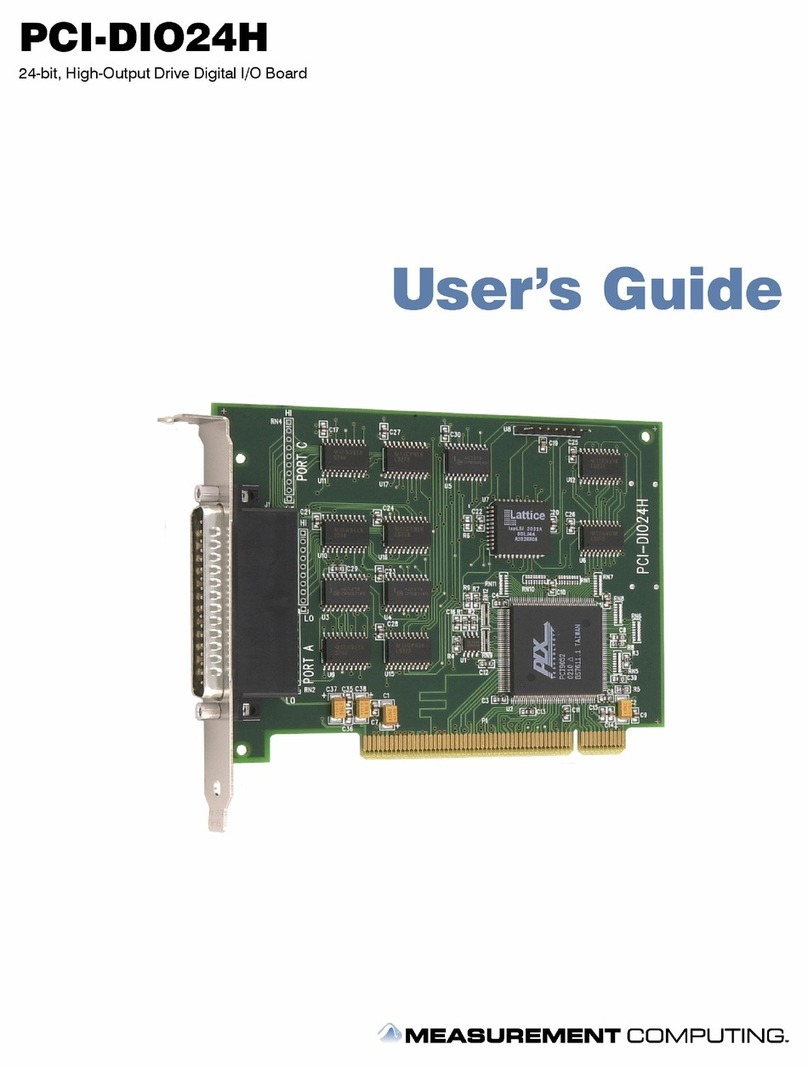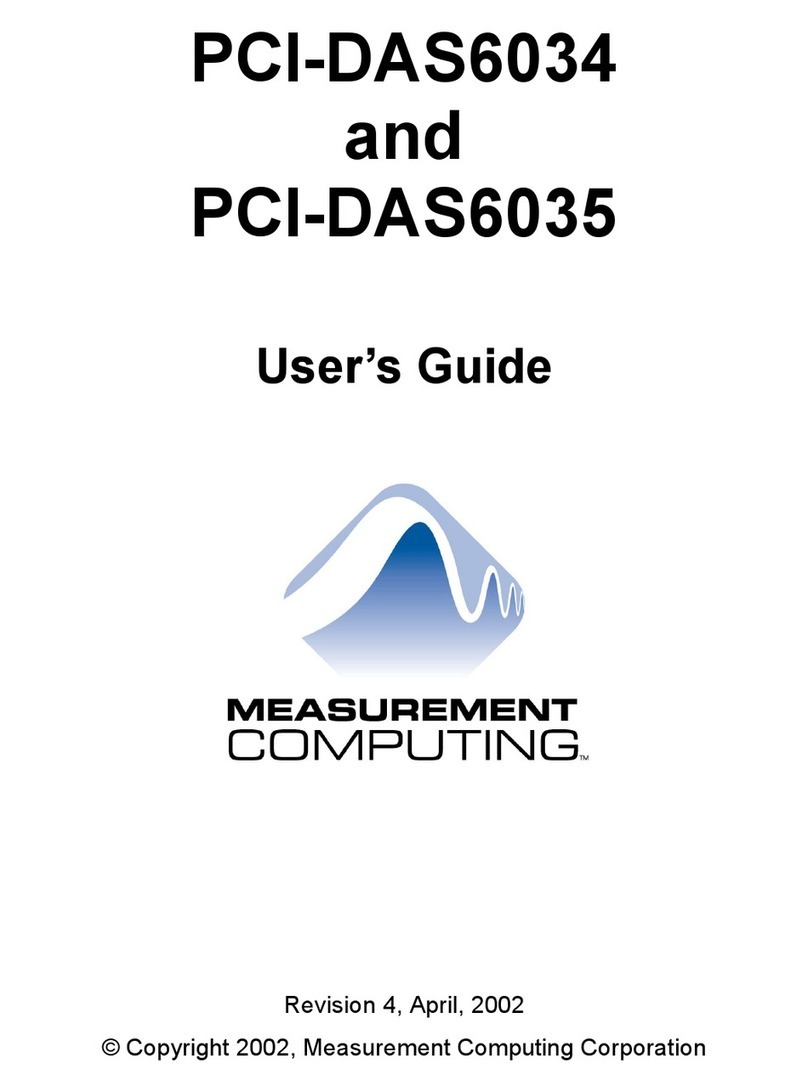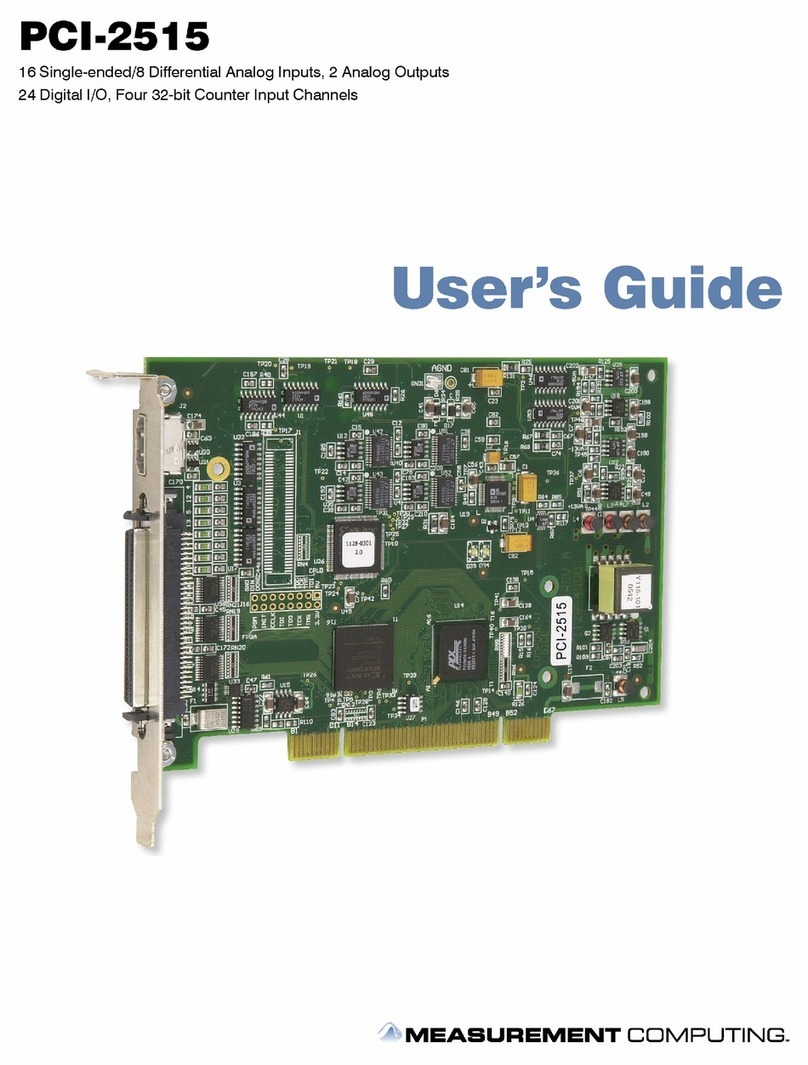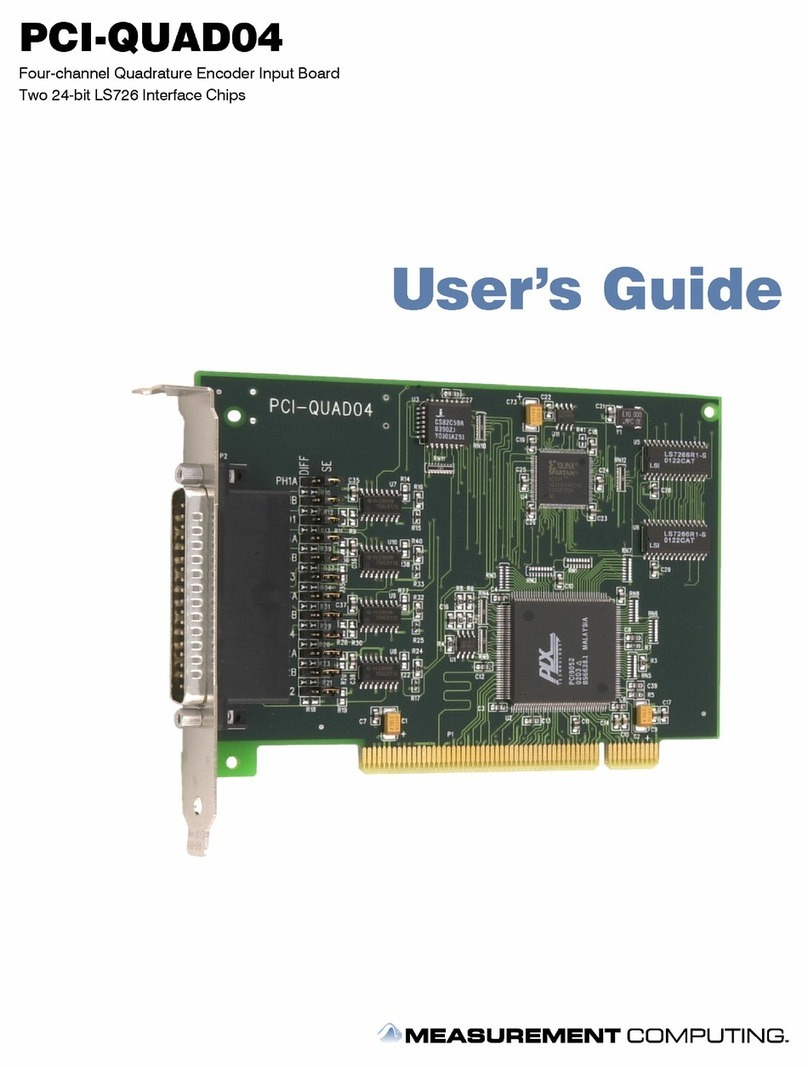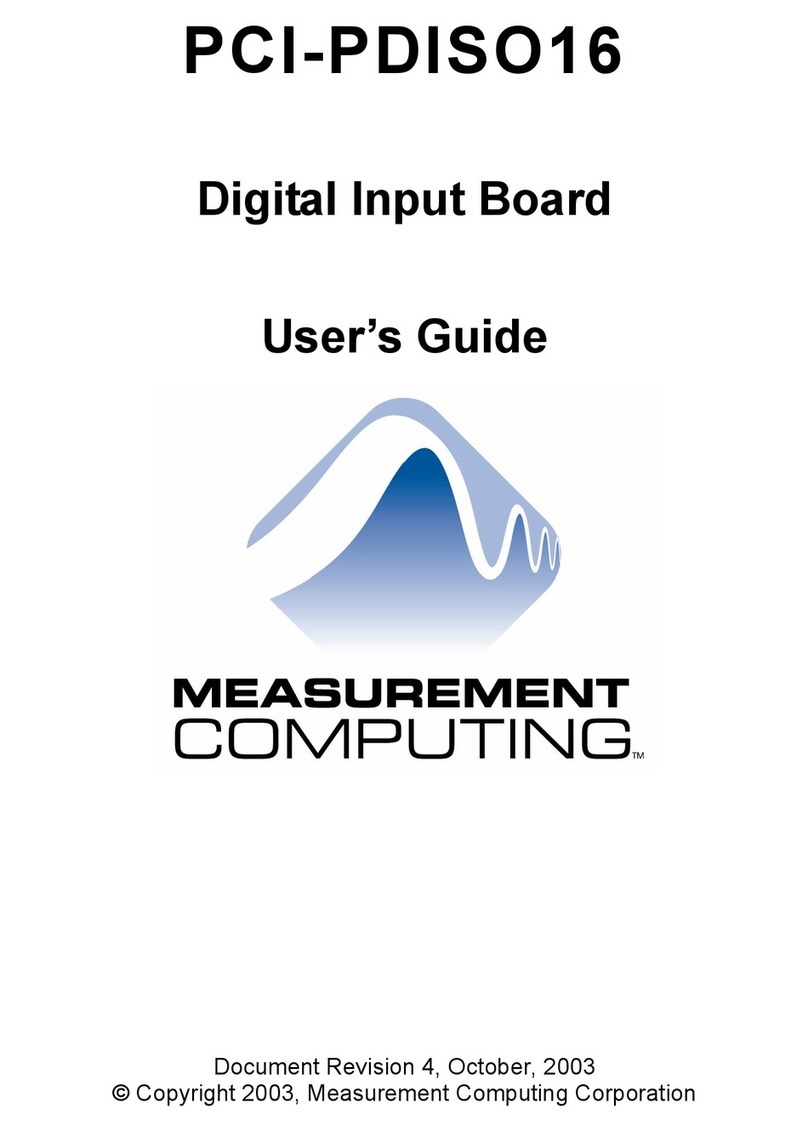
4
Table of Contents
Preface
About this User's Guide.......................................................................................................................5
What you will learn from this user's guide ......................................................................................................... 5
Conventions in this user's guide ......................................................................................................................... 5
Where to find more information ......................................................................................................................... 5
Register-level programming ............................................................................................................................... 6
Chapter 1
Introducing the PCI-DAS1200/JR ........................................................................................................7
Overview: PCI-DAS1200/JR features ................................................................................................................ 7
Software features ................................................................................................................................................ 7
PCI-DAS1200/JR block diagram ....................................................................................................................... 8
Chapter 2
Installing the PCI-DAS1200/JR ............................................................................................................9
What is included with your PCI-DAS1200/JR ................................................................................................... 9
Hardware .......................................................................................................................................................................... 9
Additional documentation ................................................................................................................................................. 9
Optional components ........................................................................................................................................................ 9
Unpacking the PCI-DAS1200/JR ..................................................................................................................... 10
Installing the software ...................................................................................................................................... 10
Installing the hardware ..................................................................................................................................... 10
Configuring the hardware ................................................................................................................................. 11
Differential input mode ....................................................................................................................................................11
Single-ended input mode .................................................................................................................................................11
Connecting the board for I/O operations .......................................................................................................... 11
Connectors, cables – main I/O connector ......................................................................................................... 12
Pin out – main I/O connector ...........................................................................................................................................13
Field wiring and signal termination accessories ...............................................................................................................15
Chapter 3
Calibrating the board..........................................................................................................................16
Introduction ...................................................................................................................................................... 16
Calibration theory ............................................................................................................................................. 16
Chapter 4
Specifications......................................................................................................................................17
Analog input ..................................................................................................................................................... 17
Digital input/output........................................................................................................................................... 18
Counter section ................................................................................................................................................. 18
Power consumption .......................................................................................................................................... 19
Environmental .................................................................................................................................................. 19
Main connector and pin out .............................................................................................................................. 19
8-channel differential mode pin out .................................................................................................................................20
16-channel single-ended mode pin out.............................................................................................................................21
Declaration of Conformity..................................................................................................................22
